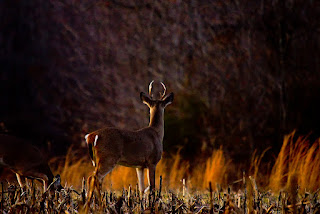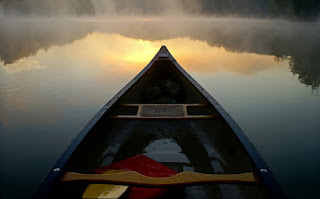The near ancient timbered floor creaked in time with the
deeper reverberation created from the clomp of each step. That clomping sound
seemed to flow outward, but not return, only to be absorbed by the brick and
mortar and wooden framing within the walls. Old buildings tend to sound the
same, feel the same with their often tired yet not yet broken spirit. They have
a feel about them newer buildings will most likely never have. It is a feeling
of time and place, of history and story. Their sounds, their feel, their aroma,
all provide a manner of time travel where one is instantly removed from the
here and now and transported back to earlier days. They were days which held
their own hopes and dreams as different as they might have been from today, yet
just as real, just as important, maybe dare I say, more so than today.
 |
| Wister circa 1915 |
A few years ago, Kris and I made a stopover visit to my old hometown in Oklahoma. While there, we entered into an old building on the south end of town across the old railroad tracks. The building was an antique shop at the time of our visit. I remembered this old building from my youth. As soon as I walked up the weathered stairs onto the front porch area and entered, I was transported back to my youth growing up in southeastern Oklahoma in the small, Mayberry-like town of Wister. Even then in the mid-1950’s Wister was an old town and all the buildings were made of weathered and faded red brick, on the sides of which were painted the remnants of advertisements for Big Chief writing tablets or Bull Durham tobacco. My grandparents for many years ran a “Dry Goods” store known as “The Dixie Store”, a two story, long squared off building.
Made of brick like all the others it stood alone just on the south side of the railroad tracks. Inside were wood and glass counters containing various sorts of small merchandise from that early 20th century era. The walls were adorned with lady’s calico dresses, men’s work overalls, boots, hats and other assorted necessities used by the blue-blooded working class of America. And, of course, there was the floor…the wooden floor which more than likely generated the same creaks and moans from foot steps that faded toward the back of the long rectangular structure.
Just down from “The Dixie Store” maybe a couple hundred yards stood the old mercantile store my Aunt Mae and her husband ran. Look closely at the photo on the right. In the distance you'll see a building partially hidden by another brick building. It has an overhang and a white front.
Mae was my grandfather’s sister, and she and her husband ran the quintessential grocery and general merchandise kind of store. I remember well as a young lad running up and down the front isle. The sound of the old wooden floor creaking and rumbling underfoot. I can even remember how certain boards would bend and give when weight was applied and of course, the aroma and ancient feel of the place. That old mercantile building had a look and feel all its own where old timers sat on the front porch in a set of rocking chairs wasting the day away.
“Slow down there boy…” they would say with half a laugh as I
ran up the wooden steps to the heavy wood and glass front door. My
grandmother would follow behind and they would nod their approval, “Morning
Miss Ophie…” “Morning Jack,” she would
reply. Then with a brassy clunk as she pressed down on the door handle, we would
go in. The door always seemed to stick and required a small jerk to pull it
loose, then in a wide swing outward the old hinges would creak in protest as
the door opened. On the day Kris and I visited, I reached for that same door handle. When I heard the brassy clunk and felt the door stick and wobble as I pulled it open, I felt like that 5 year old boy again taken back in time.
The world changed inside that old building. Outside in the
summer drifted a torched, red-hot, dusty day with the cicadas screaming in the
background. Inside it always felt cooler with the out of balanced overhead fans
spinning from the high ceiling, creaking with each wobble. At least they
stirred up the air and it felt cooler. It always seemed busy when we went
inside. My first appointed mission was always to check behind the front counter
where Aunt Mae always kept a small box of candy and bubble gum. I’d help myself
at my grandmother’s chagrin. (When Kris and I stepped inside, those same old wobbly fans still stirred the air. My eye instantly drifted toward the counter on the right. I'd swear it was the same one from all those years before and I was tempted to take a peak just inside the back corner to see if there was any candy or bubble gum.)
“You ask before you take something now…” my grandmother would remind me as I opened the bubble gum I had extracted, then I’d pout and Aunt Mae would smile say it was okay…and off I’d go as happy as a three or four-year old boy ought to be.
Those days were certainly simpler times having been
tempered by more difficult days just a few years before. They were still
connected by what many might consider outdated today…good manners, politeness,
generosity, church on Sunday, a slowness of pace, a connection to family, a
purpose in life other than just for self. Life certainly was slower, then, with
far fewer distractions and a great deal more self-reliance. Sometimes I feel
like the world has forgotten how to be like that. Well, as far as that goes, I suppose, so have I. All it takes is something as mundane as a creaking, worn out old door to
shake me out of today’s hectic pace of life.
The Dixie store was long ago torn down, but it still stood when I was a young boy. All that is left now is just a concrete slab, and that may not still be there. The mercantile store Aunt Mae ran as far as I know, the building is still standing, it's been a few years since our return visit. Around 1950 or so, before I was born, my grandparents opened their own dry goods store on the other side of the tracks and did quite well until around 1967 or so.
 |
| The new Dry Goods store - circa 1950 |
During the 1960's there were two devastating floods that all but destroyed the old nature of the town. After the second one, my grandparents gave it up and retired.
Whenever I enter an old building today and feel the wooden
floor, and breath in its ancient aroma, my heart is instantly transport back to
1955 where the, even then, old buildings simply by being there created a
wonderful Americana memory. Come to think of it, 1955 felt more like 1905 in
many ways. I love old stores and I feel more like my old self after having
visited one.







































